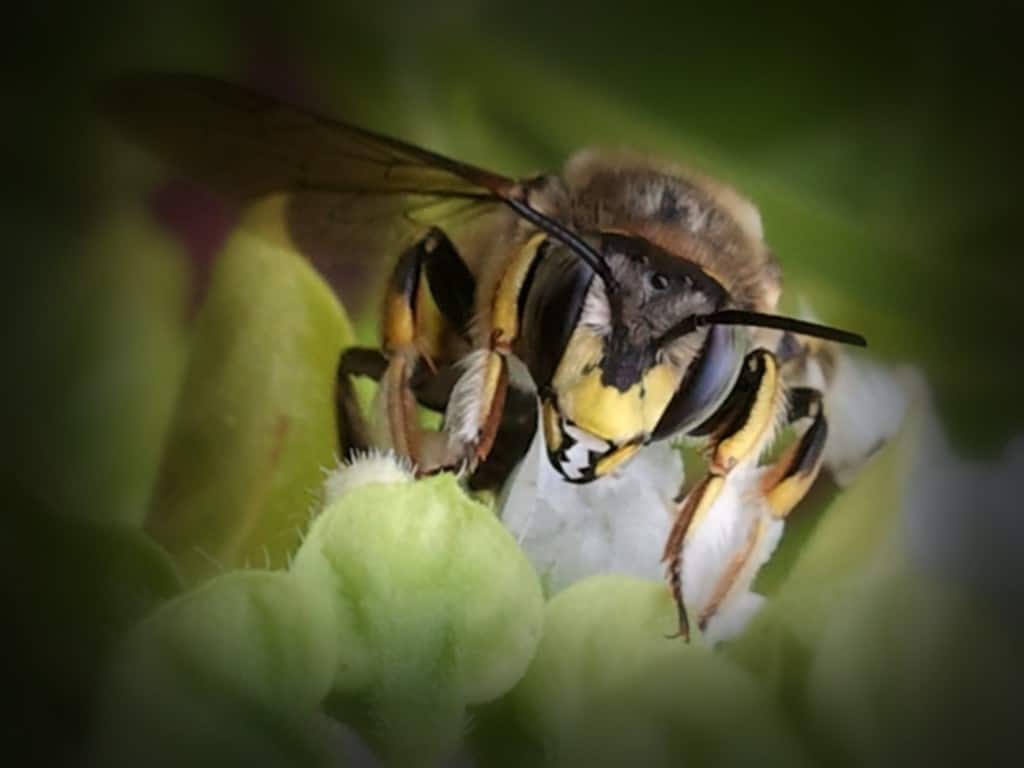
Here’s a neat smartphone photography tip I wanted to share with you. Please note, no bees were harmed in the making of this blog post!
The summer was at an end and we were well into the month of September. The air was crisp, fresh and there was a gentle breeze. Earlier in the day, I had prepared a rack of ribs to throw on the BBQ with a nice chipotle rub, a couple of skewers of onions, zucchini, sweet potatoes and bell peppers to round out the meal.
While waiting for the grill to come up to temperature, I looked over the garden. The policeman’s helmets were going to seed. The rose bush was no longer blooming and the tomatoes were coming to an end. It was a great year for the squash, tomatoes and peppers.
On the deck, I had a small herb garden with rosemary, basil and thyme, just to name a few. And there he was, a honey bee dancing around the basil flowers.
Biology had taught me that when a honey bee’s body temperature drops, the metabolism slows down and so does the movement. Time to get my “camera”. I went in the house and grabbed my smartphone, a Samsung Gallery S.
Returning, I went over to where I last saw that little pollen gatherer and noticed that he had not gotten very far.
As I tapped the camera app on the phone, I positioned myself to snap the shot. Focusing was simple enough, and I used the default settings (I did not go into the macro mode). One little trick I had learned was to use the volume up and volume down buttons while in the camera mode. This effectively gave me the same as a digital zoom.
How do you do it? Move as close as you can to the subject and then tap the screen to focus. Once the camera is in sharp focus, you can use the volume buttons to zoom in and out. It is amazing how close you can get to your subject.
If you have the desire to take your own photos of bees, it is quite simple. Here is all you need.
Grab a small mason jar and ring (you do not need the lid) You will also need a small piece of fabric or even a piece of paper towel.
As bees do not tend to move very fast, it is quite easy to lower the jar over top of a bee while it is visiting a flower. Once you do this, gently cover the opening of the jar with the cloth. You can use the ring or an elastic to hold the cover in place. With your “subject” safely in the jar, put the jar in the refrigerator for about an hour. This will sufficiently drop the bee’s body temperature down and slow the metabolism (it will not harm the bee).
Now it is time to get creative. Locate the flower that you wish to use as a backdrop for your image and gently dump the bee onto it. The bee will be quite slow at first, but will gradually warm up and return to normal mobility. Use this time to take your shots.

With a bit of pre-planning, you will certainly be able to get some spectacular shots.









0 Comments